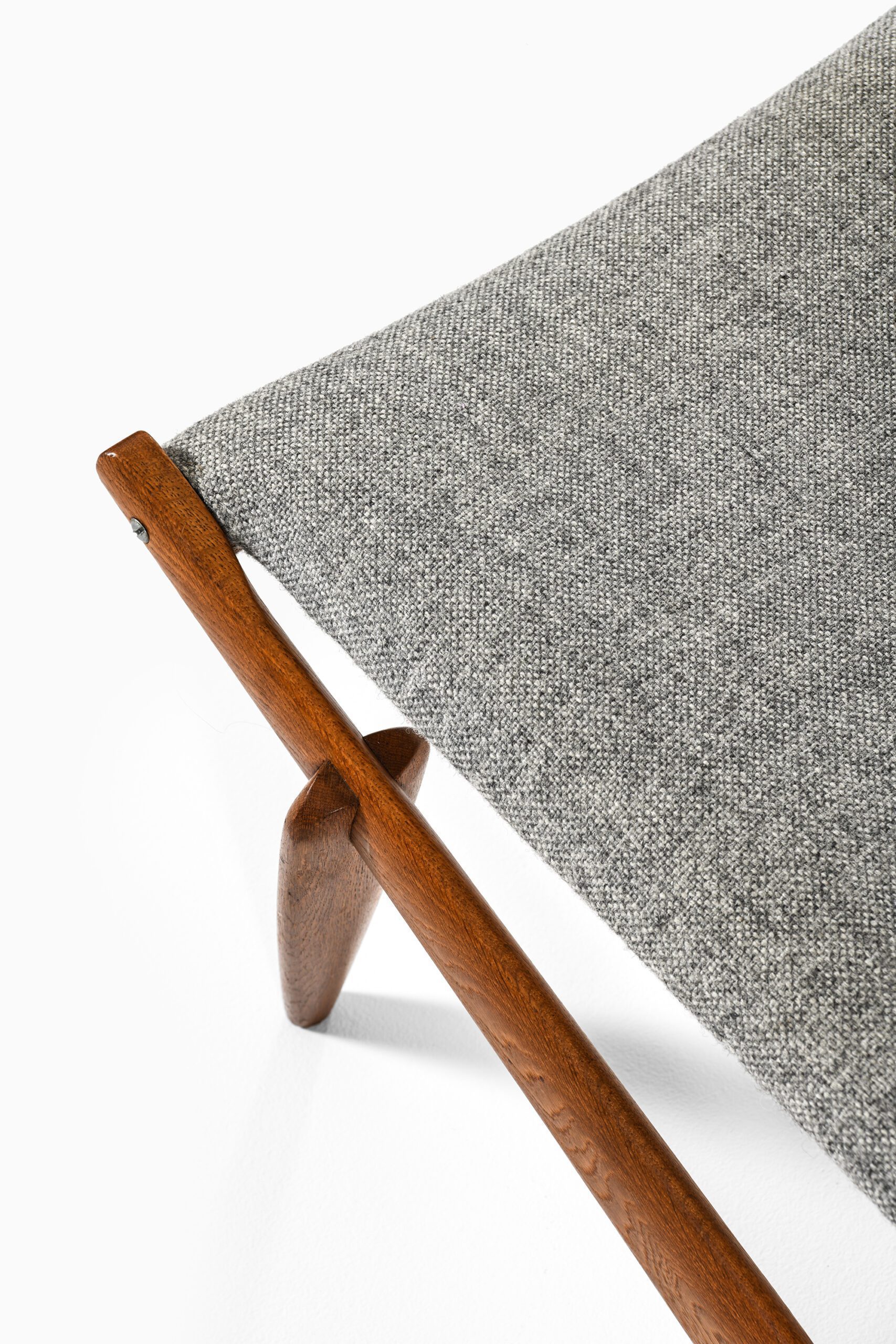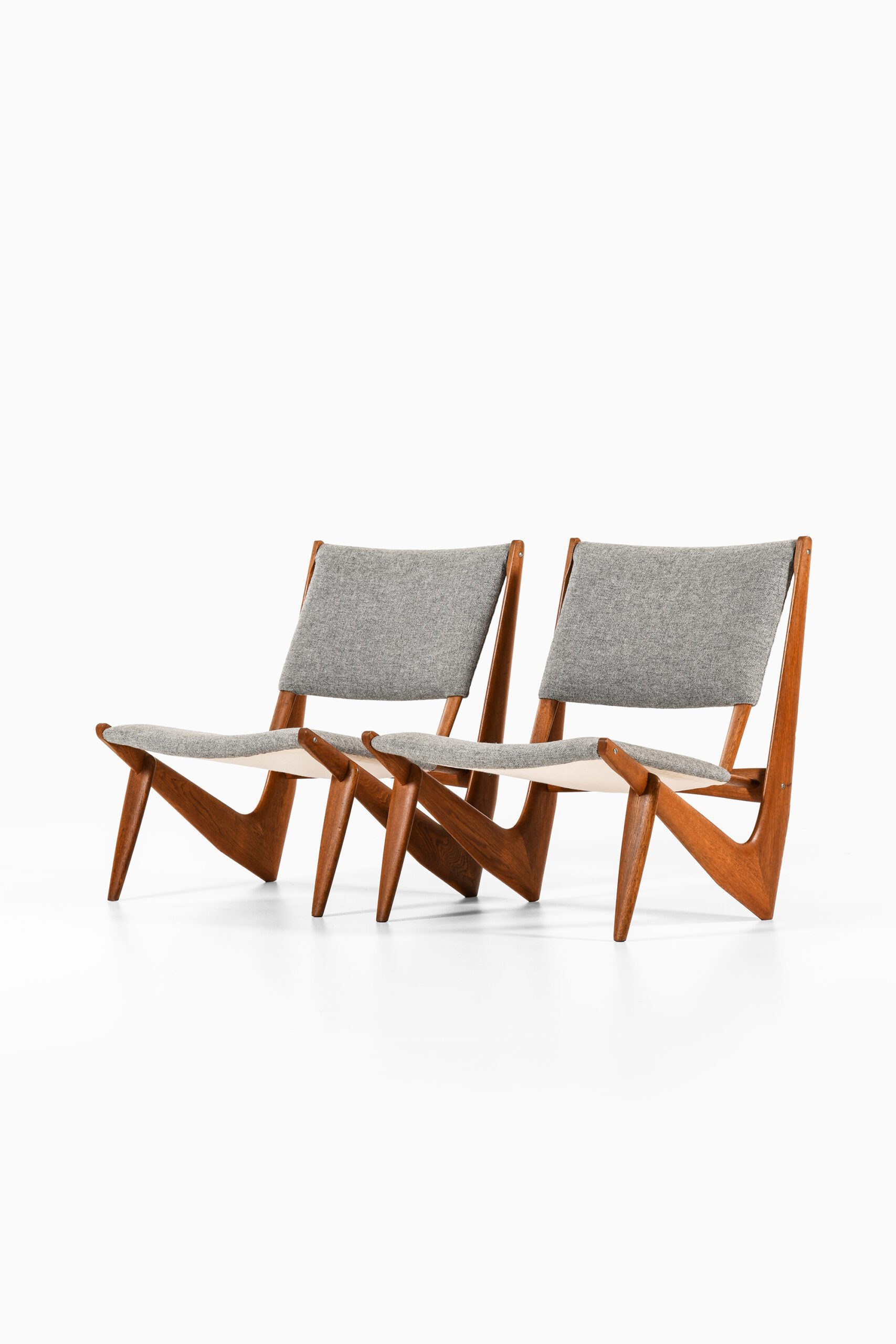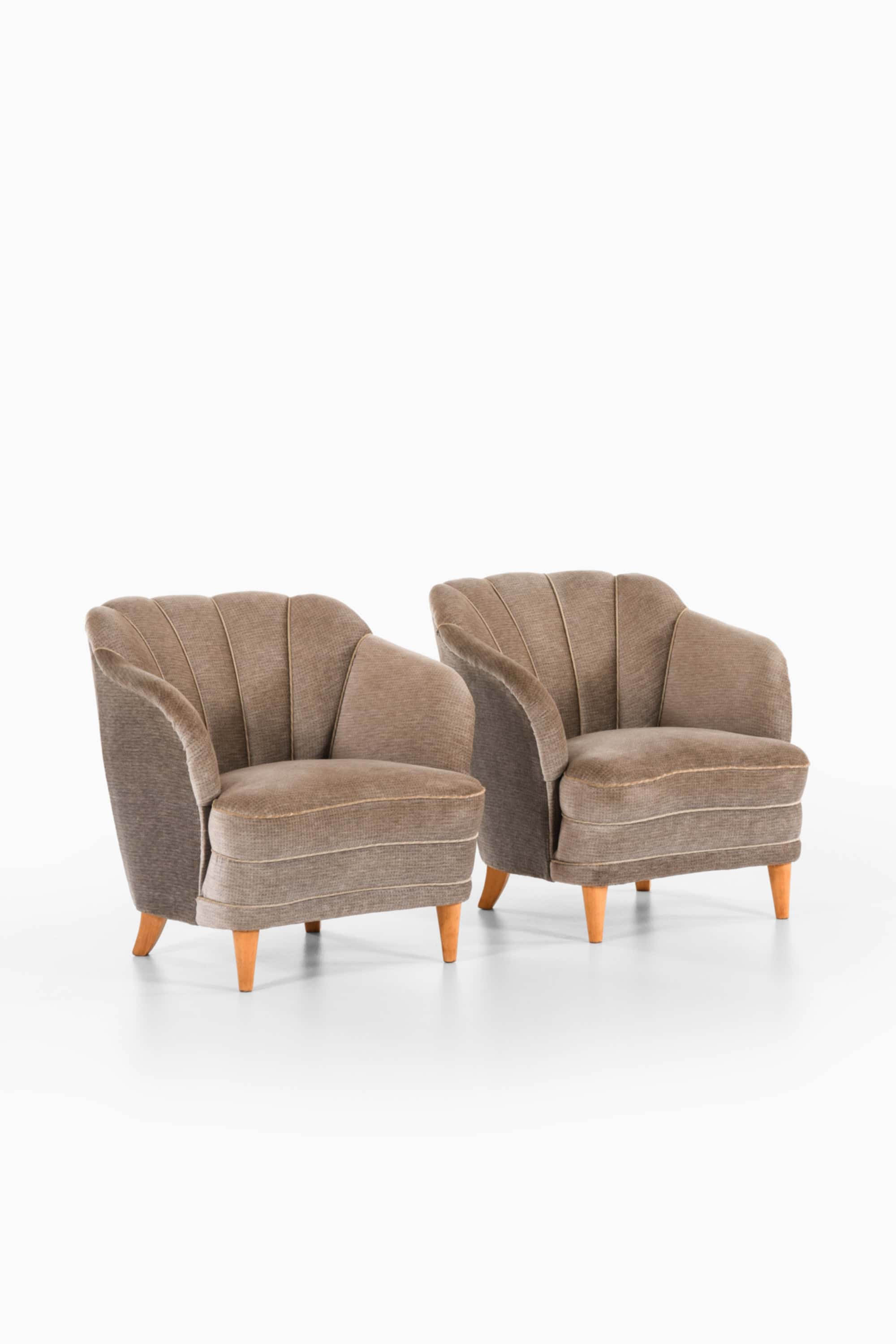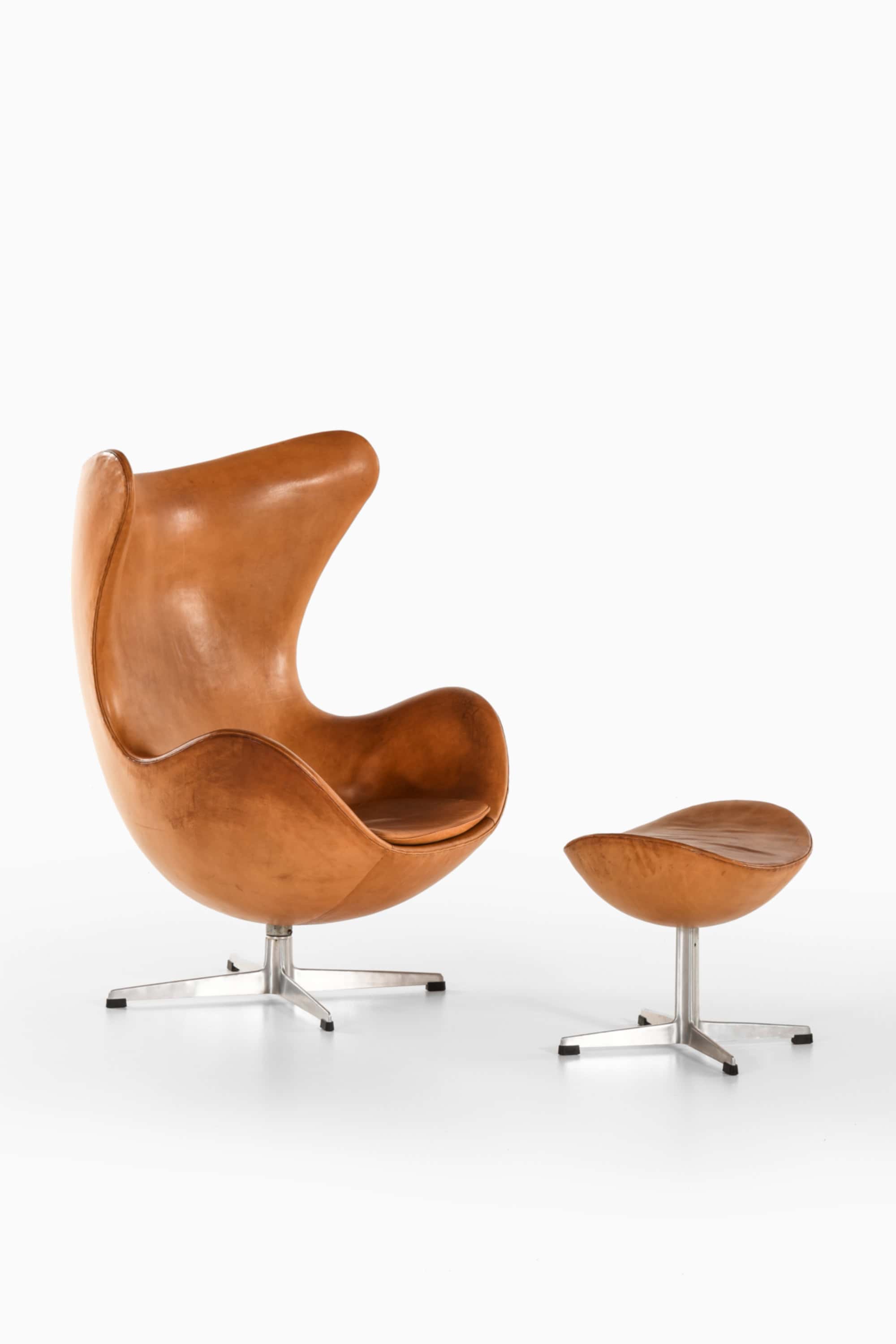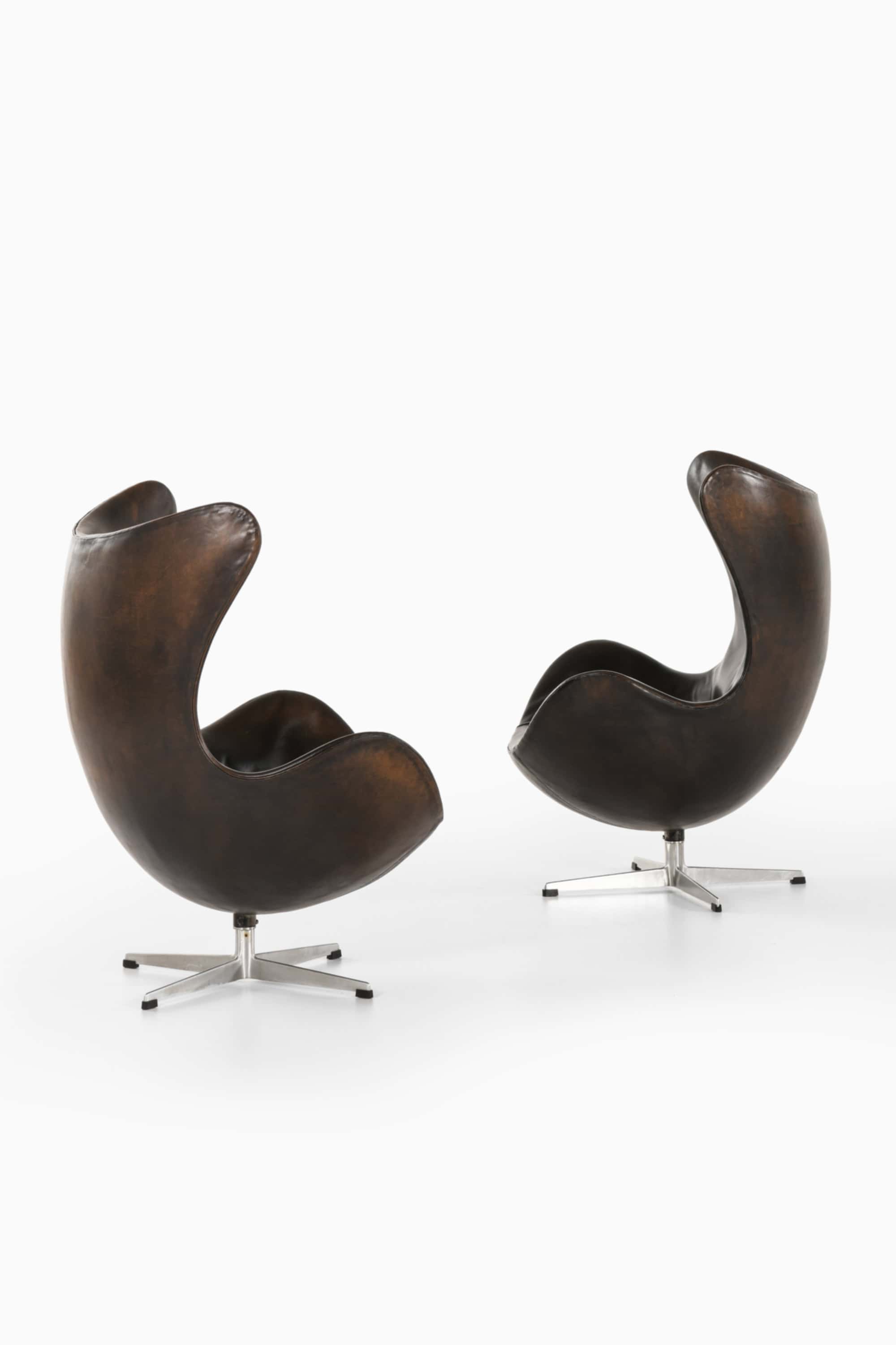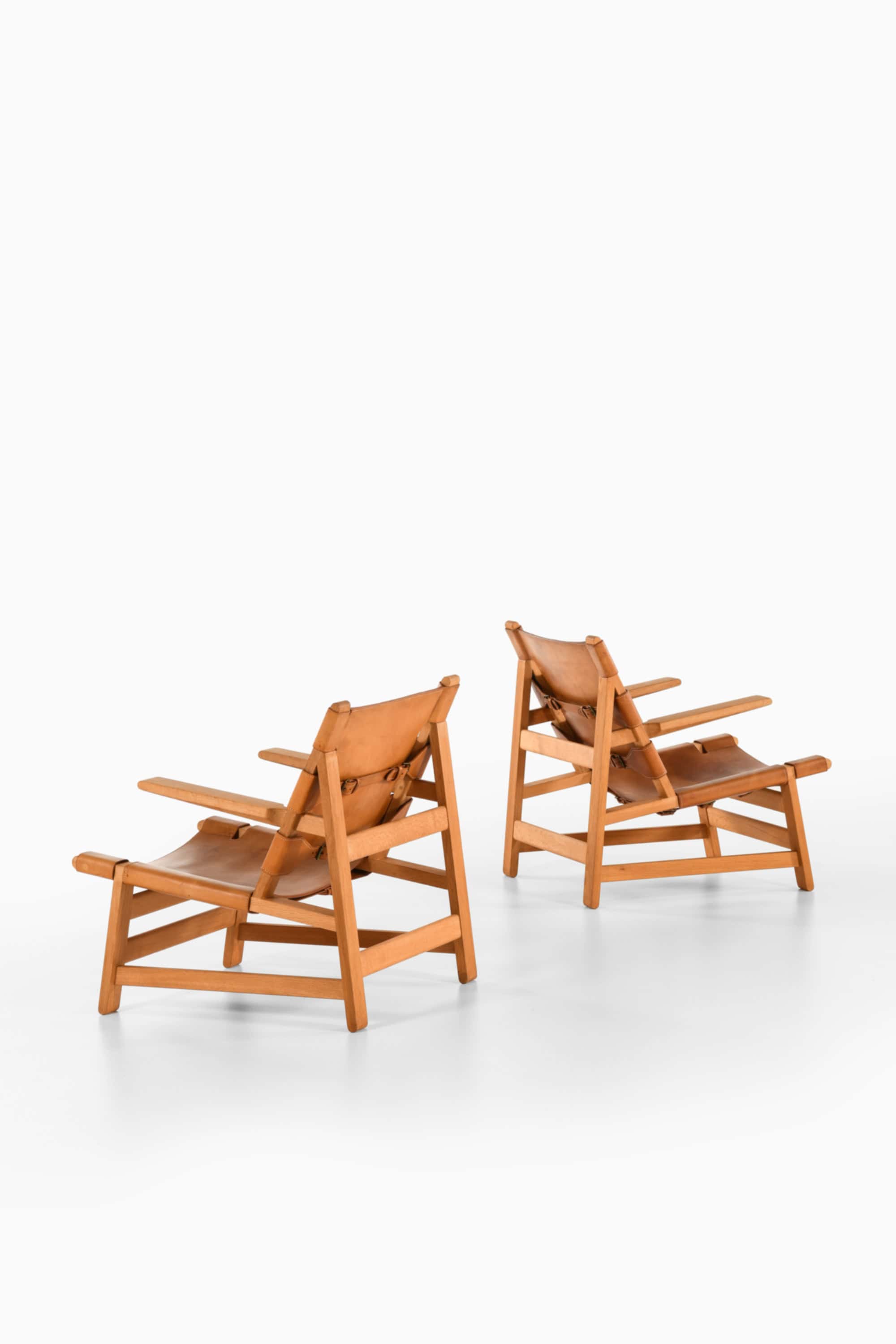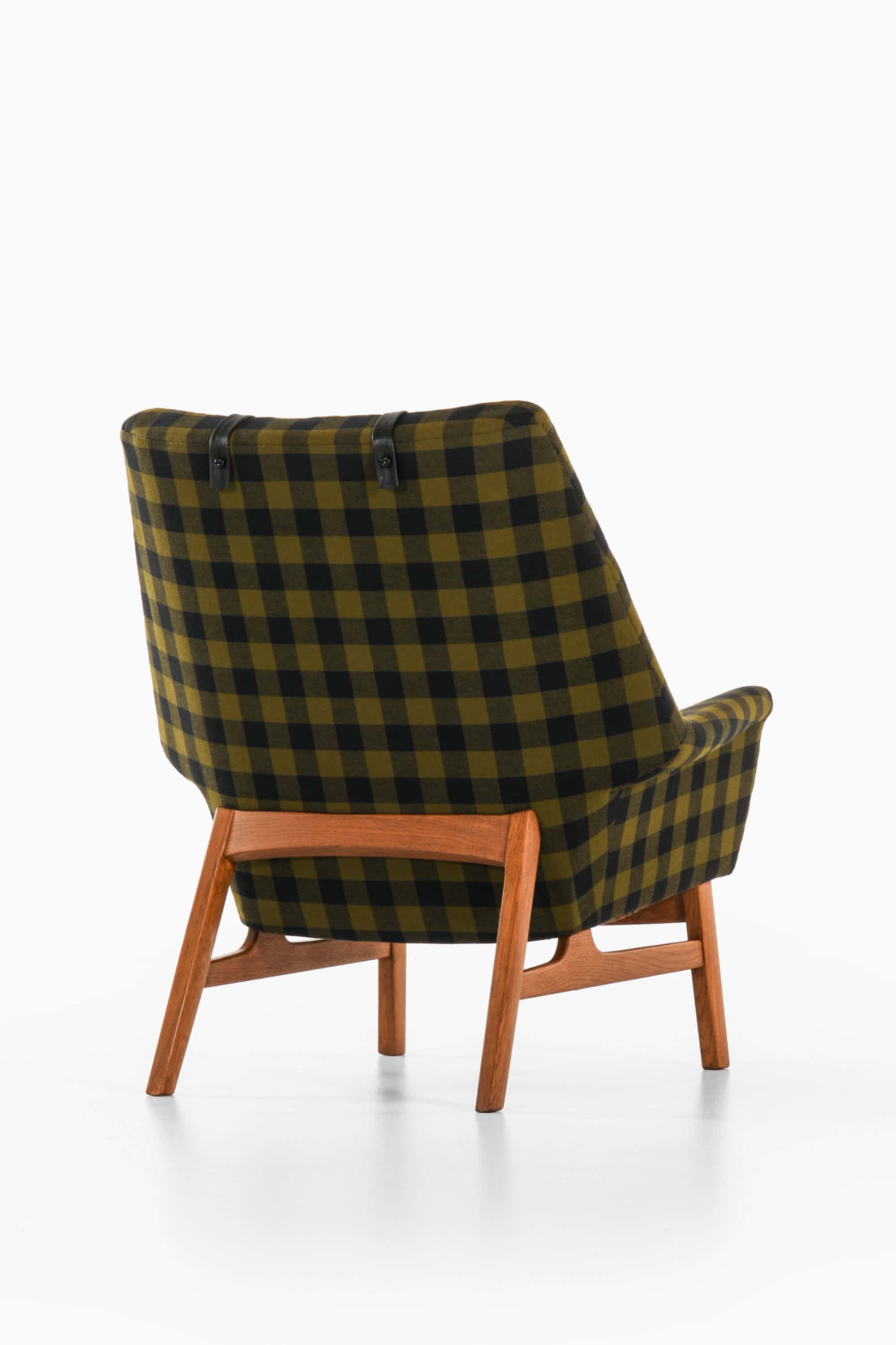Bertil W. Berhman easy chairs
This very rare pair of model 233 easy chairs, designed by Bertil W. Behrman and produced by Engen in Örkelljunga, Sweden, during the 1950s, exemplifies Scandinavian modern design through its sculptural form, meticulous craftsmanship, and functional elegance. The chairs feature solid oak frames with a rich natural grain and warm tone, forming a sharply angular, almost architectural silhouette.
The structure adopts an A-frame composition, where the rear legs extend seamlessly into the armrests, showcasing traditional joinery techniques enhanced by visible wooden dowels that reinforce the connections. The seat and backrest are suspended within this wooden frame, providing structural strength while maintaining a sense of lightness and openness.
The upholstery has been recently replaced with high-quality wool fabric in a neutral grey tone, complementing the oak’s warmth. The tightly woven fabric ensures durability and a soft texture, while the lightly padded seat and backrest offer a balanced combination of comfort and minimalist design.
Bertil W. Behrman was a Swedish designer whose work emphasized functional refinement and aesthetic clarity within Scandinavian modernism. The model 233 chair is a rare example of his approach, characterized by clean lines, dynamic visual movement, and premium materials. Engen, a lesser-known but highly skilled Swedish manufacturer, produced these chairs with a commitment to quality and craftsmanship, making them an important contribution to mid-century Swedish furniture.
The chairs are in well-preserved vintage condition, with minor wear on the oak frames consistent with their age. Each chair measures 65.5 cm in width, 72 cm in depth, 76 cm in height, and has a seat height of 35 cm (25.8 x 28.3 x 29.9 x 13.8 inches).
Dimensions (cm) | W: 65.5 / D: 72 / H: 76 / Seat H: 35 |
| Producer | Engen |
| Color | Grey |
| Decade | 1950s |
| Country | Sweden |
| Style | Mid Century, Scandinavian Modern |
| Material | Fabric, Oak, Wool |
| Designed in | 1956 |
| Item Number | 144571 |
Bertil W. Behrman






